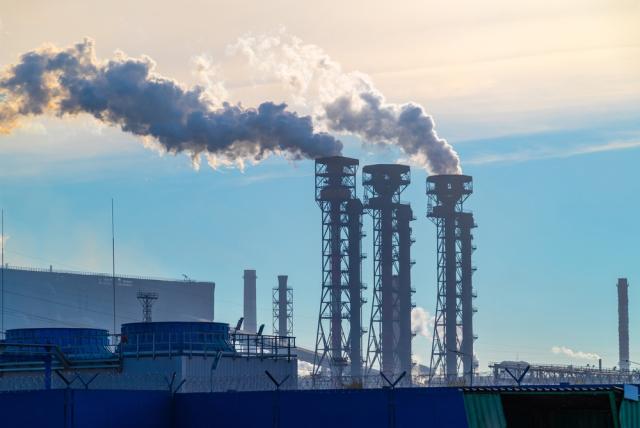
Oil production in the U.S. Gulf of Mexico emits significantly less intense greenhouse gases than most other regions in the world, a study released by the National Ocean Industries Association (NOIA) found. (Source: Shutterstock.com)
Oil production in the U.S. Gulf of Mexico emits significantly less intense greenhouse gases than most other regions in the world, a study released by the National Ocean Industries Association (NOIA) found.
Consulting firm ICF completed a comprehensive study on global oil production emissions for NOIA. The report found that despite robust energy production, greenhouse gas intensity in the U.S.—particularly in the Gulf of Mexico—is much less than other areas around the world.
“The Gulf of Mexico produces a massive amount of energy with a remarkably small footprint, and its continued success is critical for our energy security, national security and energy affordability,” NOIA President Erik Milito said in a press release. “This study validates the importance of the U.S. Gulf of Mexico as a source of energy with demonstrably lower carbon intensity barrels.”
The report, which profiled 103 countries, also included a sensitivity analysis of global methane emissions. The analysis shows that U.S. production, which has a carbon intensity 23% lower than the international average, has less emissions intensity relative to the global average when measured using other methane estimation methodologies. The GoM outperforms Russia, China, Brazil and others, with a carbon intensity that is 46% lower than the global average.
“Fundamentally, you have lower emissions because you have higher well productivity and less energy used per unit of production,” Milito told Hart Energy. “So you're getting a lot of energy from a small footprint, which ultimately gives you the low emissions.”
The Gulf also outperforms onshore U.S. in terms of emissions intensity. This is due to onshore wells requiring a lot more infrastructure, space and wells, Milito told Hart. But he also said companies have begun to look at different solutions to reduce the omnipresent threat of greenhouse gas emissions, referencing NOIA’s 2023 ESG Report. Drones, fuel additives, data analytics, artificial intelligence and even reusing old facilities are just some of the ways companies look to reduce emissions.
“Companies are finding new ways to actually develop and construct projects. They are recycling old facilities and using old facilities. There's lots of different ways that it's happening,” Milito said. “A lot of it comes back to efficiency. And when you're more efficient, you're able to drive down costs and you're able to drive down emissions.”
Ultimately, Milito feels that collaboration between the industry is the true path to permanently reducing emissions. He views NOIA’s ESG Network and ESG Workshop as the stepping stones for collaboration, as teamwork—mixed with a little peer pressure—can go a long way.
The report also states that using crude oil in the API Gravity 37.5 category, which is the largest crude category from the Gulf of Mexico, instead of similar crudes from outside the U.S. and Canada, could result in a 50% reduction in the average international carbon intensity. Because of these findings, Milito hopes investors push for oil and gas operators to use what he calls “the best in the world.”
“What we want to see moving forward is the investor community and our regulators in Washington and our congressional leaders recognizing through a study like this that we are doing it the best in the world here in the U.S. Gulf of Mexico,” he said. “So we should continue to find ways to pick the Gulf of Mexico, through our policies, to be the region of choice to produce our oil, rather than getting it from a pollution haven like Russia, China, Iran, or a place where they don't have the standards and the regulatory oversight that we have here in the U.S.”
Recommended Reading
Fracturing’s Geometry Test
2024-02-12 - During SPE’s Hydraulic Fracturing Technical Conference, industry experts looked for answers to their biggest test – fracture geometry.
Exclusive: Halliburton’s Frac Automation Roadmap
2024-03-06 - In this Hart Energy Exclusive, Halliburton’s William Ruhle describes the challenges and future of automating frac jobs.
AI Advancing Underwater, Reducing Human Risk
2024-03-25 - Experts at CERAWeek by S&P Global detail the changes AI has made in the subsea robotics space while reducing the amount of human effort and safety hazards offshore.
Exclusive: Silixa’s Distributed Fiber Optics Solutions for E&Ps
2024-03-19 - Todd Chuckry, business development manager for Silixa, highlights the company's DScover and Carina platforms to help oil and gas operators fully understand their fiber optics treatments from start to finish in this Hart Energy Exclusive.
Tech Trends: AI Increasing Data Center Demand for Energy
2024-04-16 - In this month’s Tech Trends, new technologies equipped with artificial intelligence take the forefront, as they assist with safety and seismic fault detection. Also, independent contractor Stena Drilling begins upgrades for their Evolution drillship.






